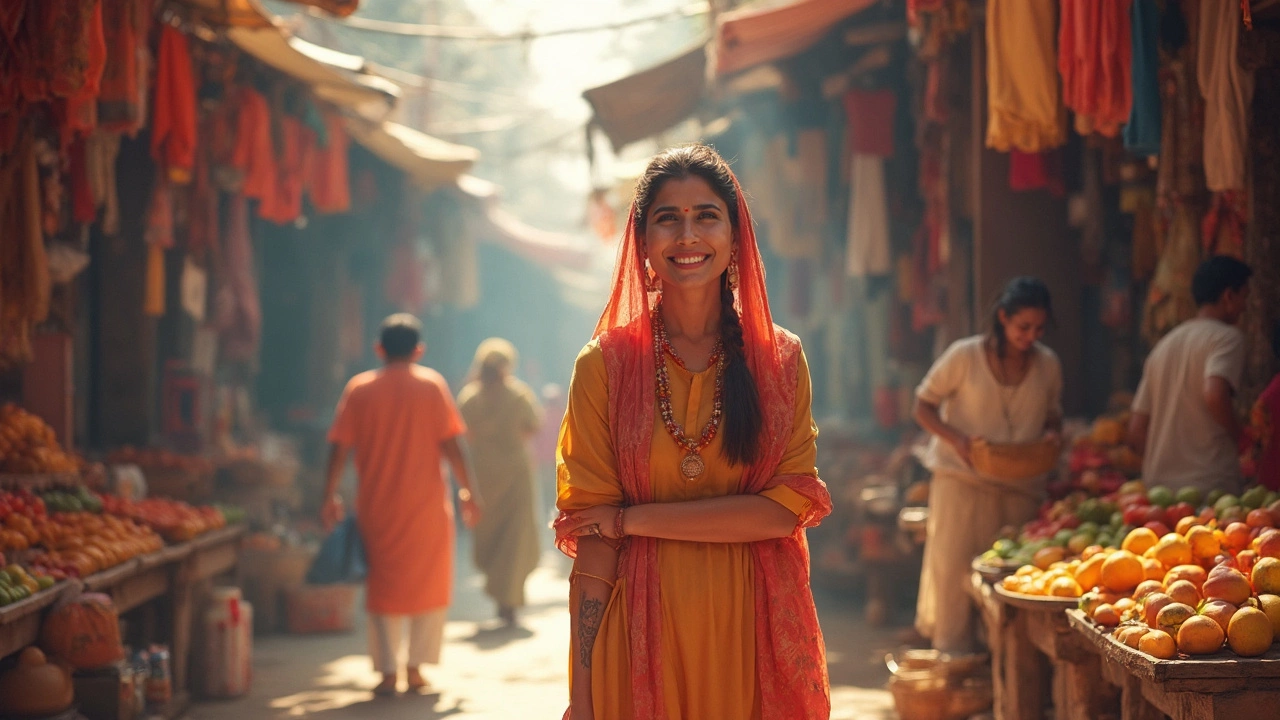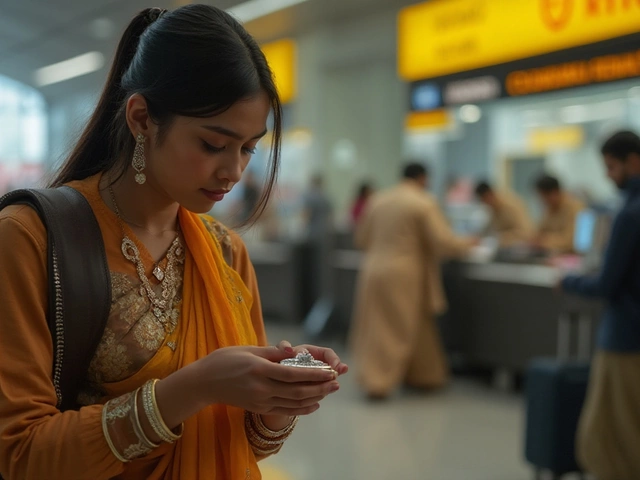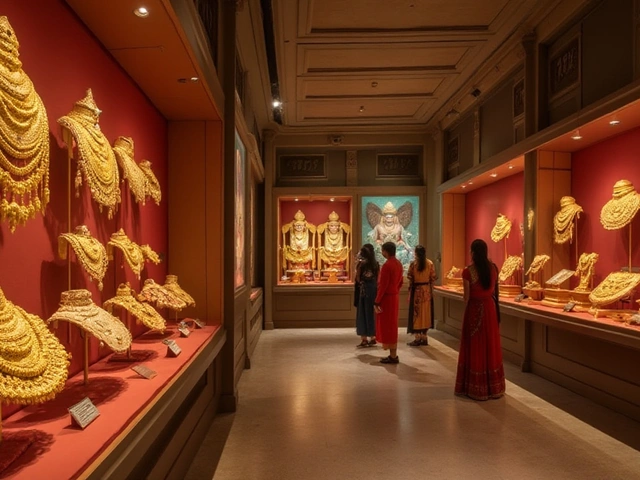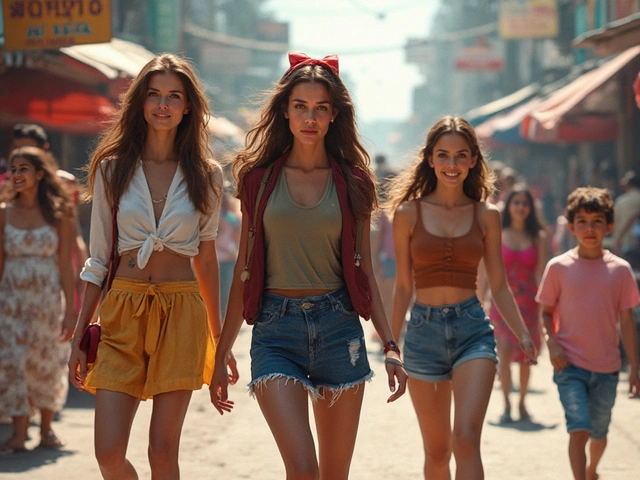Stepping into India is a sensory overload: colors, sounds, and—of course—fashion that’s nothing like what you see back home. Most Americans worry about standing out or accidentally offending someone. Good news? Dressing right in India isn’t rocket science, but there are some unwritten rules that go beyond just fashion.
Want to fit in and stay comfy? Start with the basics: Indian dress codes often lean conservative, but they're not one-size-fits-all. Big cities like Mumbai and Bangalore might surprise you with how modern people dress, but small towns and religious places expect you to cover up. It’s less about fashion statements, more about respect for local ways. Always keep a scarf or shawl handy. It’ll save you in air-conditioned taxis, at temples, and even if you need a polite cover-up in a pinch.
Don’t get tripped up by the heat, either. Your usual jeans and tees might feel like a sauna in the humid south or scorching summers. Light cotton shirts and loose pants work everywhere and dry quickly in monsoon rains—trust me, synthetic fabrics are a nightmare here.
- Understanding Local Norms
- Weather and Practical Clothing Choices
- Must-Have Accessories
- Shopping Tips in India
- Common Mistakes Americans Make
Understanding Local Norms
India’s dress code can catch Americans off guard. What feels normal in Los Angeles might stick out in Delhi. Clothing carries a lot of meaning in India—often tied to respect, religion, and even safety. When in doubt, aim for a bit more coverage than you would at home. Shoulders and knees are the big ones to keep covered, especially for women, but it goes a long way for men too. Even in sweltering heat, most Indian men won’t walk around in shorts (unless they’re at the beach or the gym). Light, full-length pants and short-sleeve shirts get the thumbs up almost everywhere.
Hitting a temple or religious site? Here, rules get strict. Cover your arms and legs, and bring a scarf to cover your head—especially at Sikh gurudwaras and Muslim mosques. Shoes must come off before you enter, so slip-on shoes make life easier. And if you see locals making a habit out of something (like not wearing hats inside certain places), just follow along.
Here’s a handy fact: in 2022, a survey by travel group World Nomads found 74% of Western tourists in India said they felt more welcomed when dressed modestly. That’s not just about blending in for photos, but actually shaping the experience you’ll have—locals open up more, you get fewer stares, and scammers assume you know your way around. Check out this quick snapshot comparing city and town dress norms:
| Location | Common Dress Code | Notes |
|---|---|---|
| Mumbai, Delhi | Modern, casual (jeans, t-shirts allowed) | Still better to avoid tank-tops or short skirts |
| Jaipur, Varanasi (tourist towns) | Loose, modest clothes | Scarves/shawls handy for temples |
| Small towns, villages | Traditional, conservative | Full-length clothes, cover shoulders/knees |
One more tip: local families never wear shoes inside homes—even fancy hotels will expect you to slip them off when visiting someone’s personal space. Watch your feet and step quietly. When it comes to American fashion India, it’s all about small changes that help you feel at home and show respect from day one.
Weather and Practical Clothing Choices
India’s weather is all over the place—boiling summers, sticky monsoons, and chilly winters in the north. First thing to know: light, breathable fabrics are your best friend. Cotton and linen work great in most places, especially during the crazy heat from March to June when temperatures can soar over 100°F (38°C). Forget jeans—they get heavy with sweat and never dry out quick.
Check out this quick weather breakdown for some of the main cities:
| City | Summer Avg High (°F) | Winter Avg Low (°F) | Monsoon (in. rain/month) |
|---|---|---|---|
| Delhi | 104 | 48 | 8.3 |
| Mumbai | 93 | 61 | 32.0 |
| Bangalore | 89 | 59 | 13.1 |
| Chennai | 97 | 68 | 15.7 |
This variety means one suitcase won’t cover all. Here’s how to handle it:
- American fashion India: Stick with loose-fitting shirts, cotton pants or longer skirts. It’s respectful and cool—literally.
- Layer up if you’re visiting Delhi or the north in winter, but skip bulky coats. A fleece and a decent windbreaker are plenty because it gets cold (between 40–60°F), but not arctic.
- During monsoon (June to September), pack a lightweight rain jacket and quick-dry clothes. Flip-flops or water-resistant sandals are essential, unless you like soggy sneakers.
- Block the sun with a wide-brim hat and always use sunscreen, especially in places like Rajasthan where the sun feels relentless.
- Avoid white clothes; they get dirty fast, especially with dust and mud. Earth tones and busy prints hide stains and blend in better.
Don’t worry about buying everything before you land. Most local markets sell basics dirt cheap. You’ll blend in, stay cool, and save suitcase space by grabbing some of your clothes after you arrive—even Indians do this when they travel across regions.
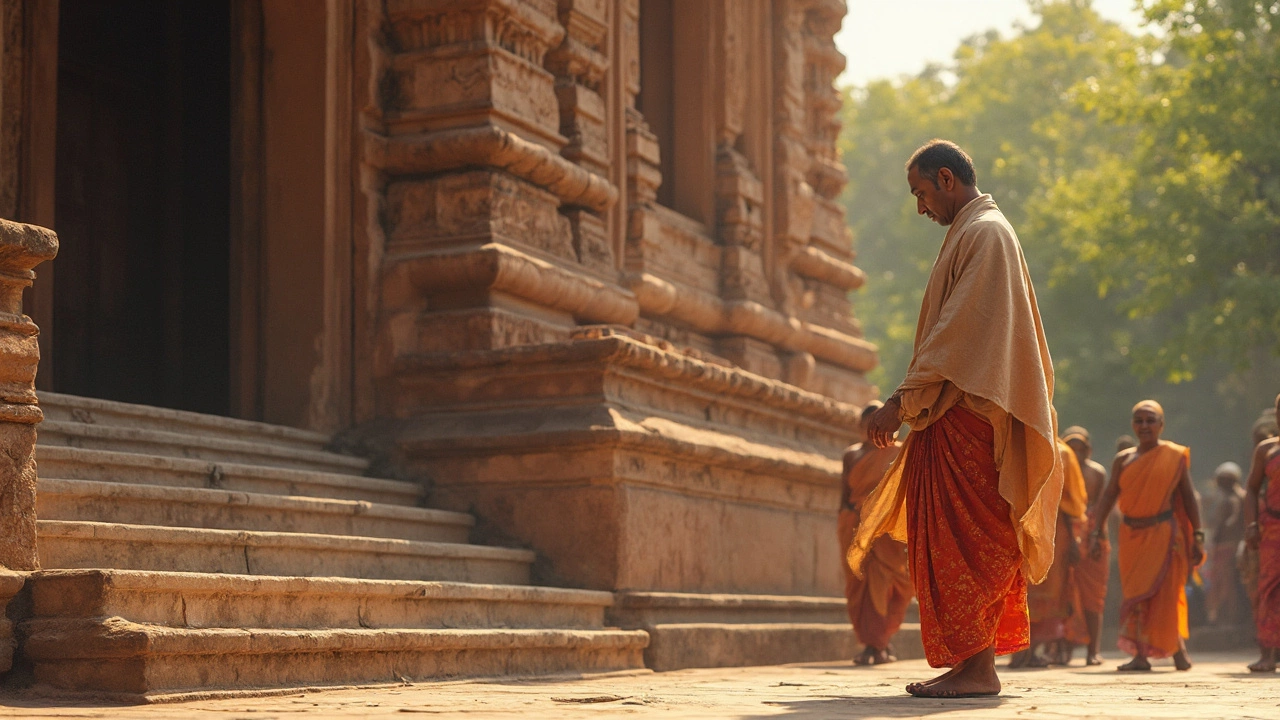
Must-Have Accessories
If you’re packing for India, the right accessories can make life way easier—and help you fit right in. Some travel gear sounds cool on paper but won’t survive a day on an Indian street, so it pays to pick smart.
- Scarf or Shawl (Dupatta): This is your MVP. Men and women both use them in India, especially for religious sites. It covers your head, protects you from dust, blocks surprise sun, and is an instant sign of respect at temples or mosques. Lightweight cotton works best since it breathes easily in the heat.
- Sunglasses: The sun in India isn’t shy, even in winter. Cheap sunglasses from home might not cut it. Locals swear by UV-protected lenses because glare and dust are everywhere. Polarized shades are a lifesaver on city streets and long train rides.
- Travel Shoes or Sandals: India’s cities mean lots of walking, uneven sidewalks, and sometimes—well, less-than-pristine streets. Grab sturdy sandals that strap on tight or closed-toe shoes that can take a beating. Popular Indian brands like Bata or Paragon are easy to find if you need backup.
- Reusable Water Bottle: Staying hydrated is non-negotiable. Most Americans underestimate just how hot or polluted Indian cities can get. Carrying your own bottle cuts down on plastic waste and saves you from overpriced tourist stalls. Refill at hotel dispensers or safe water outlets.
- Crossbody Bag: Forget backpacks in crowded buses or markets—they mark you as a tourist, and they’re awkward in tight spots. Crossbody bags keep your stuff close and are harder to snatch. Look for one with zippers and RFID protection for your cards.
Accessories are about more than just style; they’re problem solvers for daily Indian life. Check out this table for a quick rundown of how often these come in handy:
| Accessory | Why It Matters | Typical Use Frequency |
|---|---|---|
| Scarf/Shawl | Temple visits, sun, pollution | Almost daily |
| Sunglasses | UV and dust protection | Daily |
| Sturdy Sandals | Comfort, safety, hygiene | Daily |
| Water Bottle | Hydration, health | Multiple times a day |
| Crossbody Bag | Security, convenience | Every outing |
Packing the right gear is way more important than bringing flashy new shoes or bulky gadgets. Choosing the best accessories is an easy way to up your travel game, blend in, and avoid headaches—especially for anyone searching for solid travel fashion India tips.
Shopping Tips in India
Packing light? India is actually a goldmine for getting dressed on the go. Whether you need a casual kurta or a snazzy scarf, markets here are packed with options that won’t destroy your budget. And if you're trying to blend in, shopping local is way better than any mall back home.
First up: open markets, or “bazaars.” These are the heart of Indian shopping. Cities like Delhi's Sarojini Nagar, Mumbai’s Colaba Causeway, or Jaipur’s Johari Bazaar are legendary for deals on cotton shirts, loose pants, sunglasses, and shoes. Even small towns have bustling markets, and you’ll find not just clothes, but also all the fashion accessories India is known for—think handmade bags, simple jewelry, and printed scarves.
“When you shop at local markets in India, you’re not just buying clothes. You’re buying into the culture—a chance to wear what’s comfortable and respectful and to take home something that truly reminds you of the place,” says Vogue India’s fashion editor Priyanka Kapadia.
Here’s what helps when you’re shopping as an American in India:
- Haggle. It’s not rude—it’s expected! Vendors often start high, but friendly bargaining can get you good prices. Just keep it light and respectful.
- Check the fabric label. Indian summers call for cotton and linen. Avoid polyester if possible, unless you’re buying for winter or going to the mountains.
- Trial rooms aren’t always available. Know your size in centimeters, not inches.
- Look for local brands. FabIndia, Biba, and Westside offer modern Indian styles in air-conditioned comfort if street markets aren't your vibe.
Here’s a quick comparison of where to get which items:
| Item | Where to Buy | Typical Price (USD) |
|---|---|---|
| Cotton Kurta | Local Bazaar, FabIndia | $4–$15 |
| Scarf/Shawl | Street Markets, Handicraft Fairs | $2–$10 |
| Sandals | Local Market, Bata Store | $6–$20 |
| Sunglasses | Colaba Causeway | $4–$13 |
| Jewelry | Dilli Haat, Local Artisans | $1–$8 |
If malls are more your speed, most big cities have Western brands and Indian chains side by side. But really, nothing beats the vibe (and prices) of a good street market. Bring small change, be patient, and always check for a quality finish on clothes and accessories—you don’t want zippers breaking on day two.
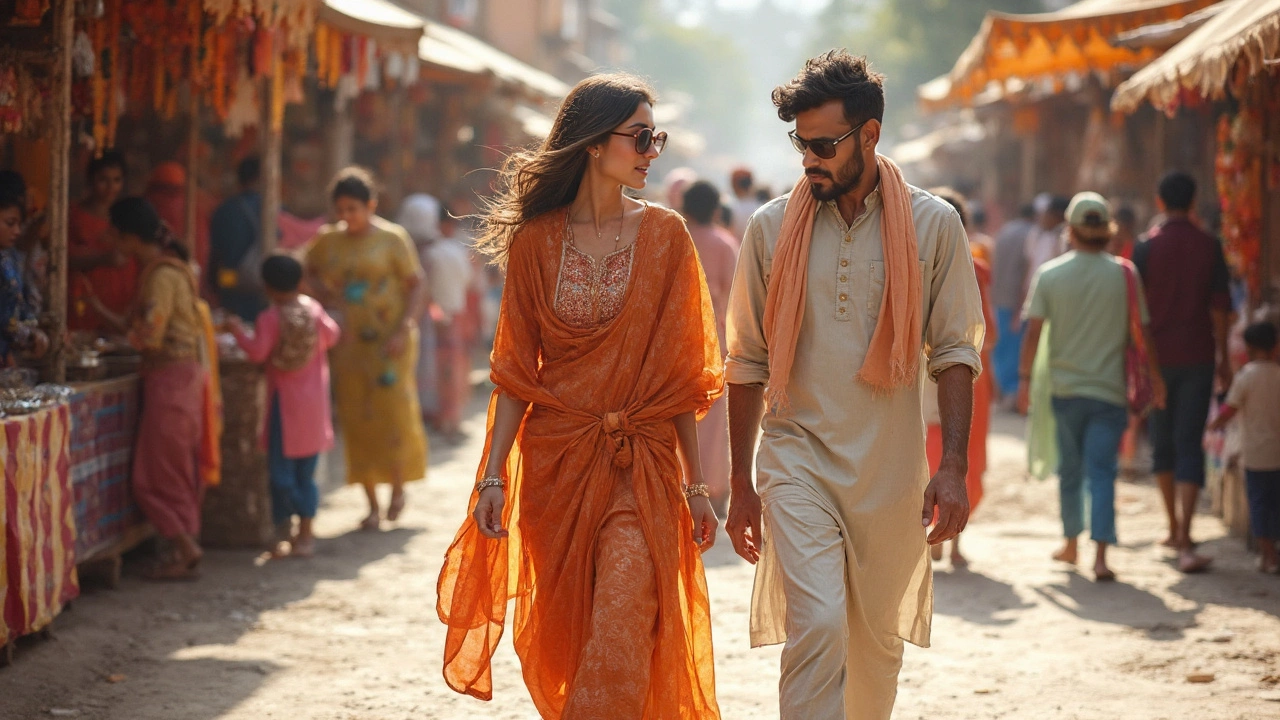
Common Mistakes Americans Make
If you Google "how should an American dress in India?" you'll see the same advice everywhere: cover your shoulders, skip the shorts. But honestly, the missteps run deeper than just missing a sleeve here or there.
- Trying to blend in with flashy Western brands: Indians pay attention to clothing brands, but rocking a big Nike or Tommy Hilfiger logo on your chest screams "tourist on vacation." Locals who wear Western labels usually mix them with Indian accessories or simple basics. Tone it down and focus more on comfort and practicality.
- Forgetting the power of a simple scarf: This one’s a game changer, especially for women. Many Americans skip carrying a scarf or dupatta. It’s not just for temples—sometimes you’ll need it to cover your head or shoulders in public spaces, or just to dodge a blast of dust and pollution.
- Wearing revealing or tight clothing: In cities like Mumbai and Delhi, you might spot locals in modern outfits, but too-short shorts, crop tops, or spaghetti straps still turn heads—and not in a good way. Err on the side of modesty, especially when you’re unsure where your day will take you.
- Picking the wrong fabrics: Denim feels like a sauna fast. Cotton, linen, and rayon are your best bets in the heat and humidity. Indians have thrived in these fabrics for generations—copy that.
- Ignoring foot hygiene: Americans love sandals for hot weather, but dirty feet stand out in temples or nice homes. Slip-on shoes or sandals with a back strap work well. Bring extra socks if you’ll be taking your shoes off a lot.
- Dressing the same everywhere: Big mistake to dress for Mumbai nightlife when you’re headed to Varanasi’s holy ghats. Different regions expect different dress codes. Ask hotel staff or look around when you arrive—Indians are usually happy to offer quick advice.
If you want some numbers, here’s what a 2023 survey from a Delhi-based travel agency found:
| Mistake | % of American Tourists Noticed Making This Mistake |
|---|---|
| Wearing shorts or mini-skirts at religious sites | 62% |
| Visible brand logos | 48% |
| No scarf/shawl for covering | 41% |
| Denim in hot weather | 56% |
| Wearing shoes inside homes/temples | 69% |
The lesson? The best tip for American fashion India isn’t about standing out. It’s blending in just enough to stay comfy, show respect, and get invited for chai instead of getting weird stares.
